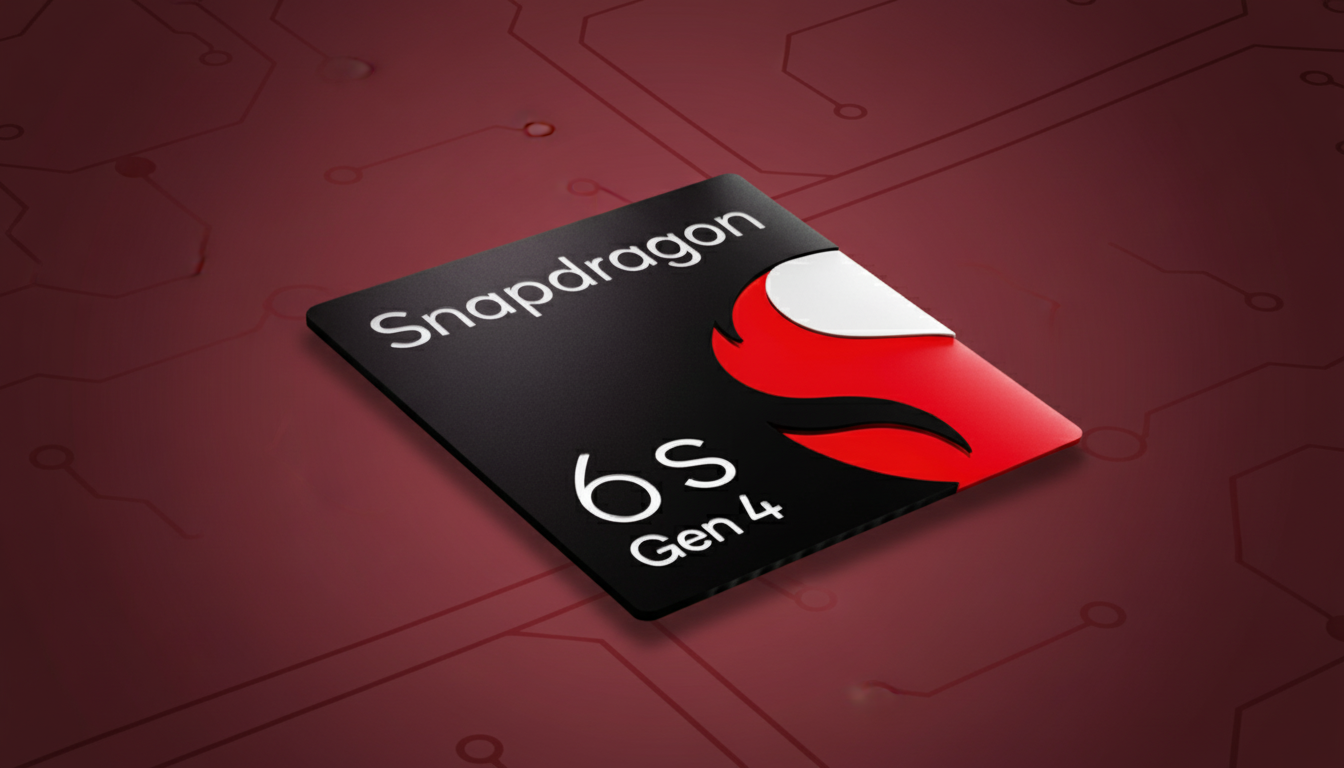Qualcomm’s new Snapdragon 6s Gen 4 zeroes in on the sweet spot of affordable Android phones, but with a twist: a clear focus on gaming and emulator performance that was once only found in pricier devices. Fabricated on Samsung’s 4nm process, the chip adds a claimed 36% CPU lift and a 59% GPU boost over its forerunner, along with gaming-focused features such as 144Hz display support, Variable Rate Shading and Game Quick Touch to reduce touch latency.
What the Snapdragon 6s Gen 4 Is Doing Under the Hood
On paper, the main recipe seems familiar—Cortex-A78 and Cortex-A55 CPU cores—but structurally it’s quite different. 4+4: Qualcomm moves from 2+6 and doubles the big A78 cores, while peak clocks rise by 100MHz. That shift is more important than the raw clock bump: More performance cores means you can have a heavier lift going on in parallel without constantly shuffling threads onto slower efficiency cores.

The step down to a 4nm node should also result in an improvement in power efficiency as well as a more consistent sustained performance figure. Transistors that are smaller tend to be thriftier, allowing a budget phone to keep higher clocks for longer before thermals kick in and force downclocking. Even if the overall peak speeds don’t leap all that much, the average frame rate in a longer session should climb higher—exactly what you want for gaming and media workloads.
Why Gamers and Emulation Enthusiasts Should Care
Qualcomm’s also making some ambitious claims about its GPU in this tier of pricing: specifically, a 59% jump and the inclusion of Variable Rate Shading for more intelligent rendering.
Game Quick Touch, which arrived higher up the stack, minimizes input latency—a minor but notable thing that can make touch control feel more responsive—on par with console-grade hardware. Coupled with support for 144Hz panels, you’re laying the groundwork for a significantly smoother scrolling experience and competitive play in games that respond well to midrange silicon.
Emulation is the other big winner. Several of the console emulators can make use of many strong “big” CPU cores, particularly systems like PlayStation 2 or GameCube/Wii. With doubled A78s, it pulls back less when a game starts spawning heavyweight threads across cores. That’s not going to turn every challenging game into a perfect 60fps sprint, but it should throw many workloads—from PPSSPP and Dolphin to today’s PS2 forks—further into the playable realm on less-powerful hardware.
Sustained performance matters here too. That is something that can be mitigated with a 4nm process, along with better scheduling across the big cores to reduce the thermal roller coasters and to limit those performance dips mid-match. It’s that which makes the difference between a handset that starts well and then falls apart, and another that quietly scrapes through my 30-minute session.

Imaging and connectivity upgrades in Snapdragon 6s Gen 4
The Snapdragon 6s Gen 4 also opens up camera headroom, supporting 200MP stills and 240fps slow motion at 720p—both increases over the previous generation. But this product brief also makes no mention of HEVC video capture, a feature that has appeared in past spec sheets; we’ve already seen such absences before and will be looking for clarification from Qualcomm or OEMs once launch devices start to roll out.
And as for connectivity, Wi‑Fi 6E has been added to support 6GHz networks alongside Bluetooth 5.4 for enhanced accessories and audio features, plus a 5G modem that can manage up to 2.9Gbps downlink. Memory support transitions to LPDDR5, which provides greater bandwidth and lower power consumption than its predecessor LPDDR4X—good for gaming and high-resolution camera pipelines. The result: fewer bottlenecks in places where past budget phones had consistently crashed.
Where this chip fits in the budget Android phone market
These Snapdragon 6 series chips are staples in value lines from Motorola, Xiaomi, HONOR and Samsung—among others—where price ceilings can result in performance concessions being made. By driving a 4+4 CPU configuration, 4nm efficiency, and modern gaming features into this tier, Qualcomm is imposing itself on a genuine volume segment. Research firms such as IDC and Counterpoint keep hammering home that cheap phones have been the driving force with most shipments for years in many areas; even small performance gains read across a vast user base.
It is also a nudge at the competitive stack. Midrange silicon has been aggressively pushed by MediaTek, and in a way Qualcomm’s move to something higher sets the floor for smooth 60fps gameplay and buttery-smooth emulation at least on some budget handsets. For consumers that might be a Moto G, Redmi Note, or HONOR mid-ranger that feels decidedly less compromised when you fire up graphics-intensive titles or emulate retro consoles.
Early outlook and availability for Snapdragon 6s Gen 4
Qualcomm hasn’t announced partner devices yet, but if history is any guide, the regular volume OEMs will be moving plenty fast. When they do, find models that match the chip with LPDDR5 memory, sufficient cooling and 120Hz or 144Hz displays to maximize the silicon’s strengths. Like last year, battery size and thermal design are still going to dictate real-world results, but the platform itself sets a much stronger floor for gaming—6-series parts really didn’t support gaming or emulation with great parity between devices.
If Qualcomm’s performance numbers hold up in third-party benchmarks, the Snapdragon 6s Gen 4 could represent a quiet but significant tipping point: budget phones that finally play like midrange gaming handsets—without the price creep.

